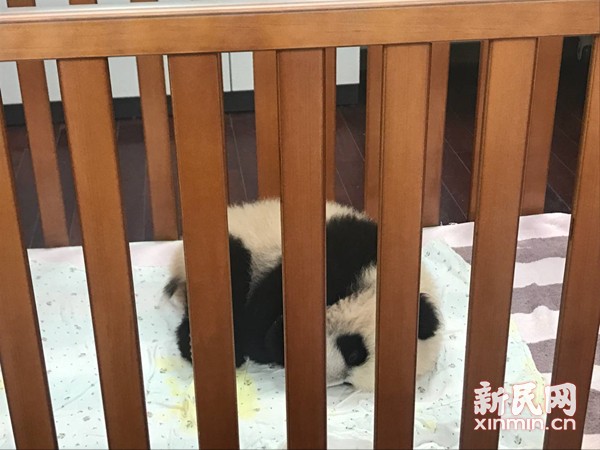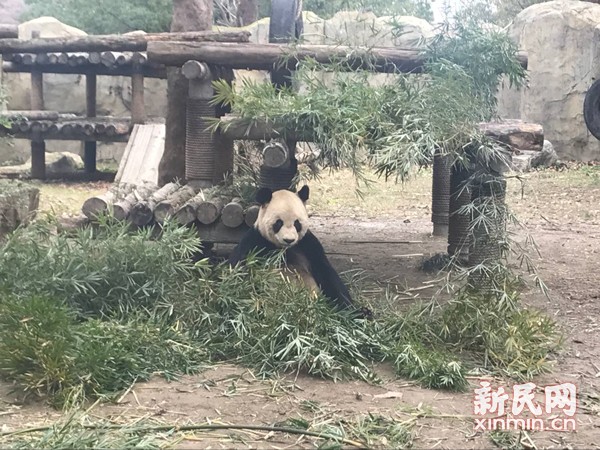The dead bodies of giant panda mother and daughter in Shanghai Wildlife Park were frozen and preserved.

[Xinmin. com latest report] After the death of the giant pandas "Dong Dong" and "Peanut", Shanghai Wildlife Park sent relevant samples of giant pandas for inspection. According to clinical and laboratory examination, postmortem examination and histopathological diagnosis on January 17, 2017, the death was caused by large-scale intestinal necrosis complicated with multiple organ failure due to volvulus. On January 19th, Xinmin Evening News Xinmin.com reporter saw in the wildlife park that at present, other pandas are on display normally, and newborn "twins" have been kept separately, and the situation is good at present.
In May 2016, Shanghai Base of China Giant Panda Conservation and Research Center settled in Shanghai Wildlife Park. As the first giant panda registered in Shanghai, "Peanut" has attracted much attention since its birth, and its protection by the garden is almost "strict". In previous interviews, the park only gave reporters ten minutes each time.
Walking into the home where the giant panda’s mother and daughter "Dong Dong" and "Peanut" once lived, the cage without the mother and daughter is particularly quiet. The exhibition boards on display have been replaced, and the original brand name of "Peanut" has been replaced. Xinmin Evening News Xinmin. com reporter learned that the remains of the giant panda mother and daughter are currently frozen and preserved.
The reporter saw that other pandas in the park were on display normally. There are 5 giant pandas in Shanghai Wildlife Park, including 3 adult giant pandas and 2 newborn twin cubs. Although no parasites, bacteria, etc. were found in the detection of "Dong Dong" and "Peanut" mother and daughter, the garden will strengthen the disinfection frequency of cages and environment in the near future, and the operating equipment has always been implemented on the principle of non-cross disinfection.

Caption: At present, the twin brother of Peanut is on display in the panda nursery. Xinmin Evening News Xinmin.com reporter Hu Yanzhen photo
For the newborn "twin" brothers and sisters, since birth, the garden has adopted the method of isolated feeding. The reporter saw that at present, my brother is on display in the panda nursery, and my sister is taken by her mother indoors. The breeder told reporters that this state will be changed. Sometimes my sister is on display and my brother is beside the mother cat. (Xinmin Evening News Xinmin. com reporter Hu Yanzhen)

Background information:
In order to better publicize the achievements of wildlife protection in China, especially the remarkable achievements in the protection of giant pandas, the State Forestry Administration decided to build three more giant panda protection bases in economically developed areas such as Beijing, Shanghai and Guangzhou, relying on the China Giant Panda Protection Research Center, according to the important strategic thinking of the national "Thirteenth Five-Year Plan". As a cooperative project between the State Forestry Administration and the Shanghai Municipal People’s Government, the "Shanghai Base of China Giant Panda Protection and Research Center" was located in Shanghai Wildlife Park.
Giant panda (Ailuropoda melanoleuca, English name: Giant Panda) belongs to Carnivora, Xiong Ke and Panda subfamily. Its body color is black and white. It has round cheeks, big dark circles, chubby body and its slow walking style. It is one of the most lovely animals in the world. The feeding habit of the giant panda is one of its most peculiar and interesting habits, because it lives almost entirely by eating bamboo. Among more than 50 kinds of plants naturally ingested in the wild, bamboo accounts for more than half, and accounts for 99% of the annual food intake, among which seven species like Fargesia gigantea and Fargesia gigantea are the favorite. (Xinmin Evening News Xinmin. com reporter)